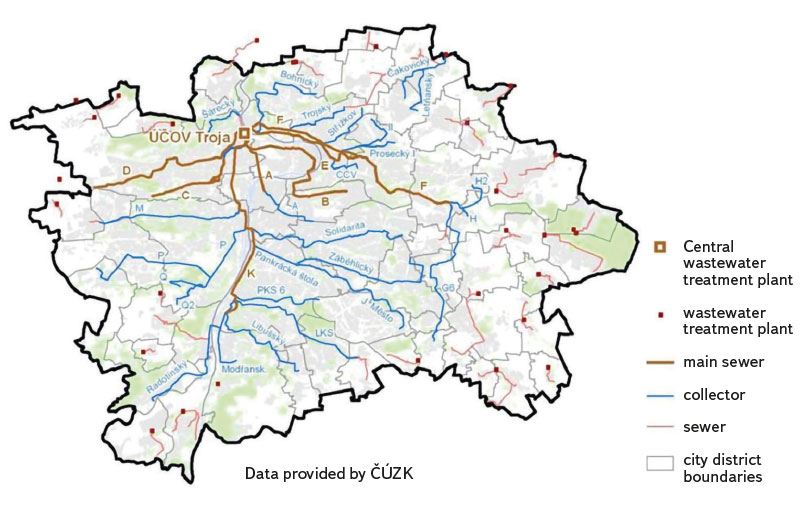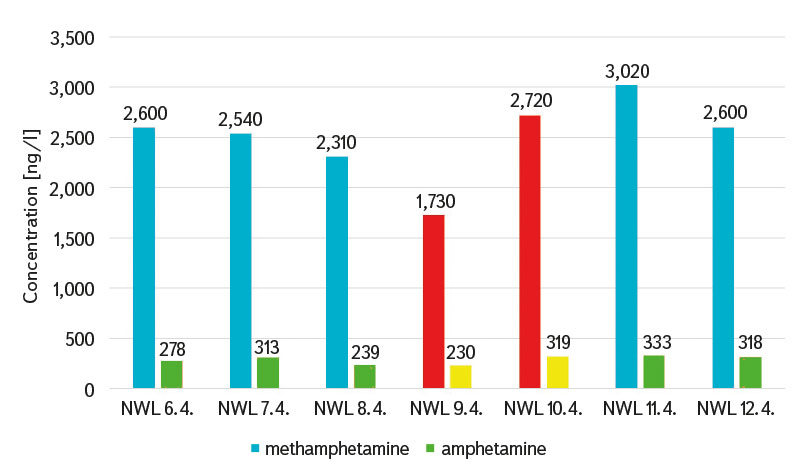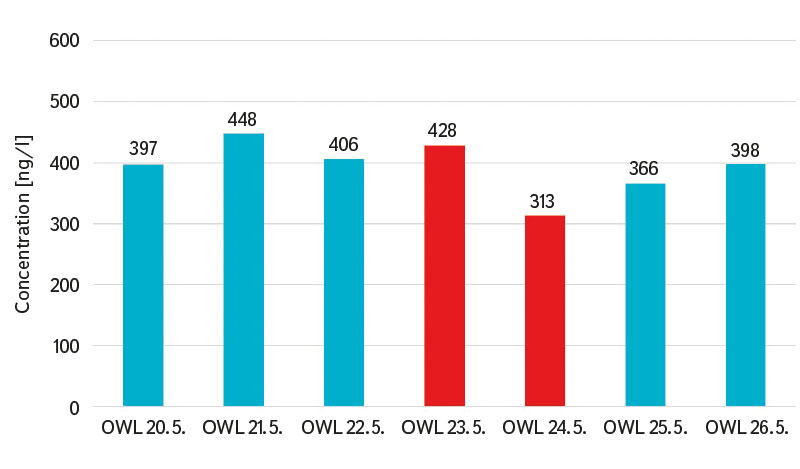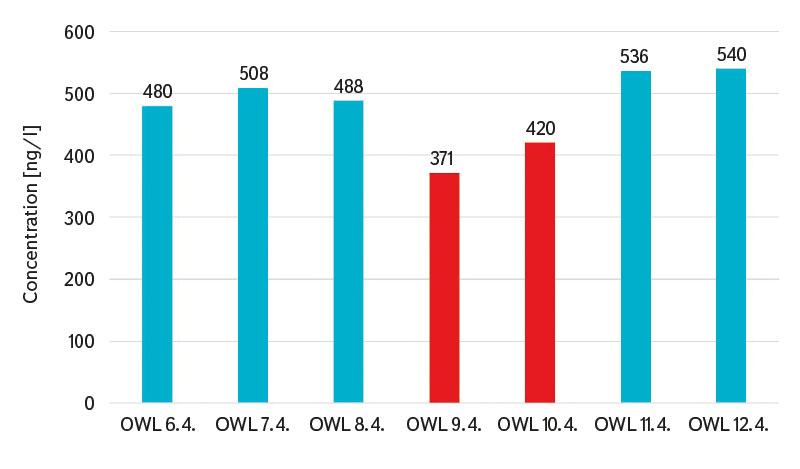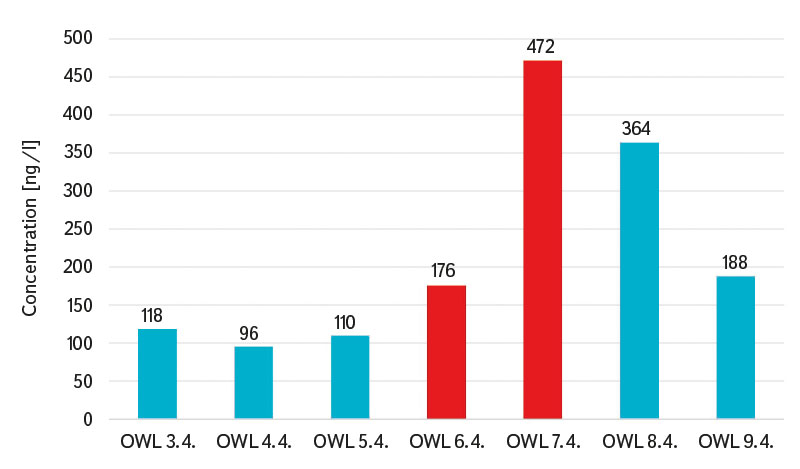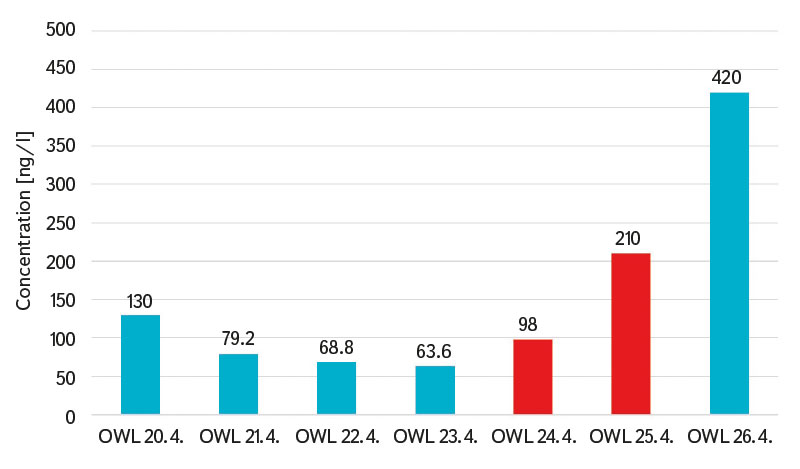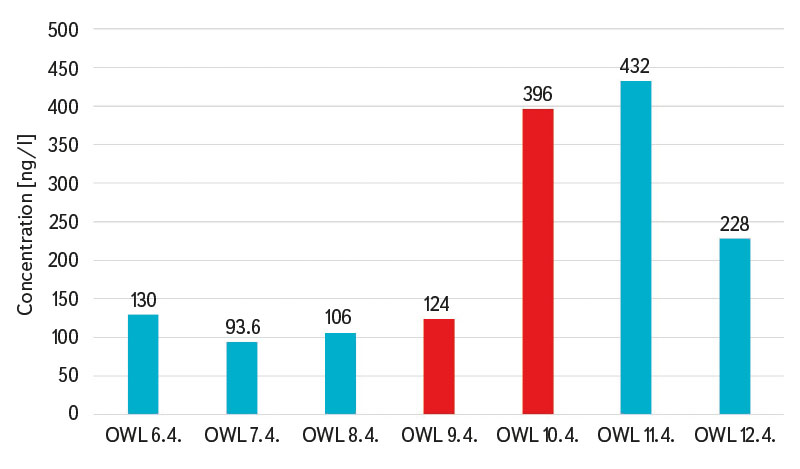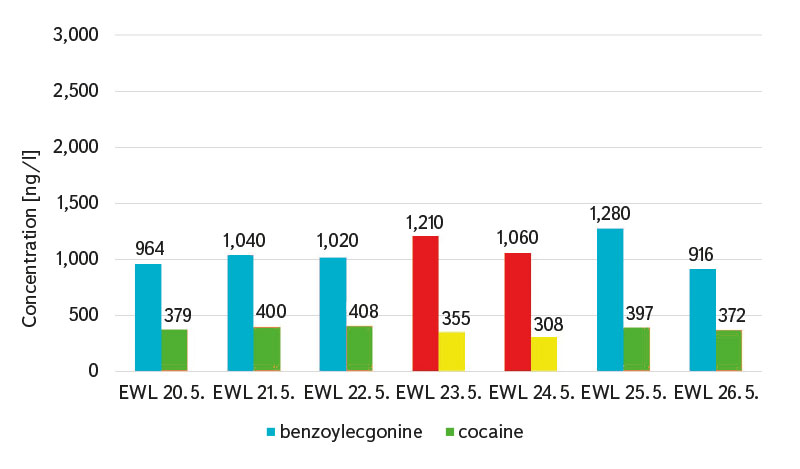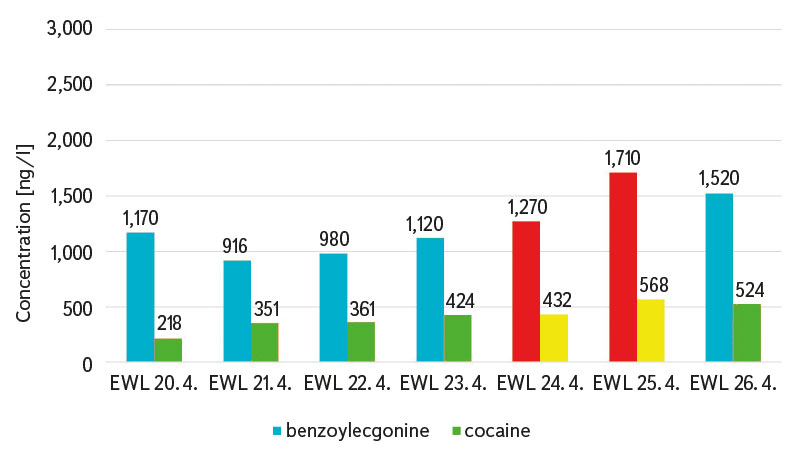ABSTRACT
The World Health Organization (WHO) declared an outbreak of a global health emergency on 30th January 2020 and a pandemic caused by Covid-19 in March of the same year. In our paper, we tried to find out if and how this situation affected drug consumption from the perspective of wastewater analysis. We compared the results of weekly sampling events from 2019, 2020, 2021 and 2022, which took place at approximately the same period of the year, but in 2020, 2021, and 2022 were affected by the state of emergency and other pandemic-related measures. We monitored the concentration of selected drugs – THC, methamphetamine, MDMA, cocaine, and some of their metabolites (amphetamine and benzoylecgonine) in wastewater samples taken at the inflow to wastewater treatment plants. According to our measurements, virtually all monitored drugs experienced changes in their consumption.
INTRODUCTION
Almost 25 years have passed since the hypothesis that wastewater can be treated as a highly diluted urine sample [1, 2]. Gradually, a new interdisciplinary field of science emerged – Wastewater Based Epidemiology (WBE), which was initially focused primarily on licit and illicit drugs [3] and gradually expanded to include other groups of substances and markers excreted by the population into wastewater. Municipal wastewater therefore contains a complex mixture of chemical substances, including human metabolites – biomarkers. Quantitative measurement of these specific substances will provide information, for example, about the way of eating, health status of the population, occurrence of diseases, alcohol and drug consumption, and the population’s exposure to environmental contaminants [4].
Given that SARS-CoV-2 viral particles were excreted by the infected population in urine and feces into municipal wastewater even before the onset of disease symptoms, the Covid-19 pandemic contributed significantly to increasing the importance of the epidemiological approach to wastewater [5, 6], which can also be used as an early warning tool before the onset of the disease.
The determination of selected drugs in municipal wastewater has long been used at the European and global level for monitoring drug consumption in monitored urban agglomerations; monitoring results are regularly published on the website of the European Monitoring Centre for Drugs and Drug Addiction (EMCDDA) [7, 8].
METHODOLOGY
The TGM WRI hydrochemical laboratory has been dealing with the determination of illegal substances in wastewater for more than ten years. The range of determined licit and illicit drugs is gradually expanding, and new substances are included in the analyses according to the current situation on the drug scene. The analytical method was developed according to the procedure published by Postigo et al. [9]. It is a fully automated on-line SPE and LC-MS/MS (ESI) drug determination method. The analytical methods in ESI+ or ESI-mode are accredited, and the laboratory annually participates in an international interlaboratory comparison of tests. This interlaboratory comparison takes place as part of global monitoring of the drug situation organized by the SCORE-network [14]. A weekly monitoring sampling campaign is implemented every year in spring, usually from April to May, and was not interrupted even during the Covid-19 pandemic. We used the results obtained as part of these sampling campaigns to monitor the impact of the pandemic on drug use from the point of view of the epidemiological approach to wastewater, as we had the measurement results available for both “normal” situation before the pandemic and during the period affected by Covid-19 and related measures. These measures also affected WWTP operation, which operated in a special regime.
History of emergency measures in the Czech Republic
From the beginning of March 2020 up to and including 2022, various regulations and measures affected by the current pandemic situation were gradually announced, expanded and cancelled, mainly in connection with the number of infected and hospitalized persons. The following overview briefly shows the announcement dates of selected measures, especially those that were in force at the time of the weekly monitoring campaigns for determination of illicit substances. An overall detailed overview of government resolutions related to the fight against coronavirus is available on the Government of the Czech Republic website [10].
Brief overview of selected measures related to Covid-19 pandemic:
2019 – in December, Covid-19 was first identified in Wuhan, China
2020
- 1st March – first case in the Czech Republic
- 12th March – state of emergency, closure of schools, restaurants, state borders, etc.
- 18th May – end of state of emergency, extraordinary measures still apply, gradual relaxation
- autumn – state of emergency again
2021
- state of emergency is gradually extended
- 11th April – end of state of emergency, followed by measures according to pandemic law
- 23rd April – additional measures were taken to enable partial relaxation
2022
- various emergency measures related to Covid-19 epidemic are still in place
- declaring state of emergency for 30 days from 4th March to 2nd April 2022
- extending state of emergency until 31st April 2022
- 11th April – due to a fundamental improvement in the epidemic situation, most of the nationwide emergency measures of the Ministry of Health were cancelled. Partial measures for healthcare and social care facilities remain in force.
Wastewater sampling and analysis
For comparison, sampling and analyses of wastewater from the Prague Central Wastewater Treatment Plant (CWWTP), at the inflow to the old (OWL) and new (NWL) water line were chosen. At OWL, water is treated from main sewers B, D, E and F, at NWL from sewers A, C and K. The sewer network of the capital city of Prague is shown in Fig. 1. The sampling campaign always started on Tuesday or Wednesday and ended a week later. 24-hour composite samples were collected, and sampling was carried out every 15 minutes at the inflow to the WWTP, behind the screens (after rough pre-treatment). Samples were cooled to 4–8 °C; if they could not be processed within 48 hours or, in the most urgent cases, within 72 hours, they were kept frozen at -20 °C until analysis. The sampling dates in individual years are not exactly the same, but they were always carried out in April and May. In the years affected by the pandemic, the sampling was also related to the capacity of the CWWTP, which worked in a special regime. Sampling took place from 2nd to 8th April 2019, from 20th to 26th May 2020, from 20th to 26th April 2021, and from 6th to 12th April 2022.
Fig. 1. Sewer network of the capital city of Prague
Results were compared for MDMA (ecstasy, 3,4-methylenedioxy-N-methamphetamine), methamphetamine and its metabolite amphetamine, cocaine and its main metabolite benzoylecgonine, and the tetrahydrocannabinol (THC) metabolite 11-nor-9-carboxy-delta- 9-THC (nor-THC), i.e., for the most common drugs. Amphetamine is used as a drug in many countries rather than methamphetamine; in the Czech Republic, it is considered a metabolite of methamphetamine in wastewater. Ecstasy and cocaine are common “party” drugs, i.e., drugs often used at parties and dancing events.
Methods for determining the above-mentioned analytes are described in detail in Pospíchalová et al. [11]. Before the actual analysis, the samples were conditioned to laboratory temperature, filtered through membrane filters to remove solid impurities, and a mixed solution of internal standards, including isotopically labelled ones, was added to the filtrate. This was followed by online SPE-LC-MS/MS determination, according to the analyte in ESI+ (MDMA, methamphetamine, amphetamine, cocaine, benzoylecgonine) or ESI- mode (nor-THC), and evaluation of the measured results.
RESULTS AND DISCUSSION
After the borders were closed due to the Covid-19 pandemic, precursors for the production of meth became more difficult to find in the Czech Republic because these substances are largely smuggled from abroad, where their sale is not strictly limited by legislation. Closing of borders also affected the availability of cocaine and heroin, which also led to an increase in the prices of individual drugs. The situation on the drug scene gradually “normalized” during 2020 and most probably adapted well to the existing state in 2021 and 2022. More detailed information about the situation on the drug scene during the state of emergency is available on the National Monitoring Centre for Drugs and Addiction website [12].
In this paper, we tried to evaluate the drug situation in the Czech Republic from the point of view of municipal wastewater analysis, i.e., use wastewater based epidemiology which, based on our experience, has a great informative value in terms of behaviour of the population connected to the sewage system in the monitored area.
Fig. 2 compares the average concentration values of individual drugs in the compared years. All values for a given analyte obtained from analyses of samples taken at both water lines are averaged.
Porovnávány byly výsledky pro MD
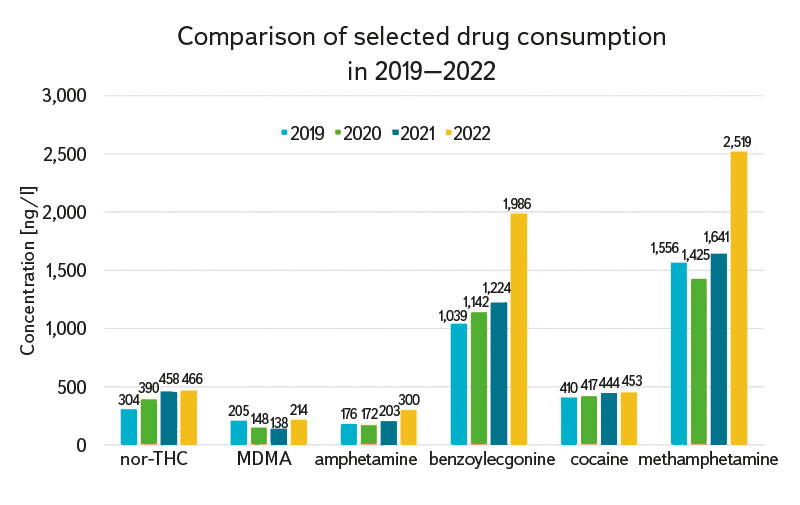
Fig. 2. Average concentration values of individual drugs and their metabolites in the compared years
It is obvious that in the first pandemic year (i.e., 2020), there was a partial reduction in the consumption of methamphetamine and ecstasy (MDMA) from the point of view of wastewater analysis. In the case of methamphetamine, this reduction was probably caused by the poorer availability of precursors for its production; in 2021, the situation on the methamphetamine drug market apparently normalized, and in the last pandemic year, at least during the sampling campaign, consumption even increased. For ecstasy, a typical “party” drug, this was most probably the impact of the ban on organizing various events where ecstasy is used, and this trend continued in 2021. In 2022, during the sampling period, most of the nationwide measures were cancelled, and the drug scene reacted very quickly to this fact.
Marijuana, or its metabolite nor-THC, which is determined in wastewater, and cocaine’s main metabolite benzoylecgonine, which is crucial for monitoring cocaine consumption, saw an increase in incidence over the years compared. Very high values for benzoylecgonine in 2022 are probably again related to the lifting of restrictive measures and the possibility to organize dance and other parties again. In the following figures, the measured results for individual drugs and their metabolites in the compared years are presented in the form of graphs. They always show the analyte concentration, date of sampling, and the water line where the sampling for the given substance was carried out. Weekends are marked with red or yellow columns.
The changes during the weekly monitoring are clearly visible here. It should be emphasized that the concentrations of monitored substances in wastewater are compared. Daily wastewater flows through a treatment plant do not vary much from day to day. Higher flows are mainly caused by rainfall, when the wastewater is diluted, and thus the concentrations of the monitored substances can be reduced.
Methamphetamine
Fig. 3 to 6 show the determined concentrations of methamphetamine and amphetamine which, as mentioned above, is mainly a metabolite of methamphetamine in the Czech Republic.
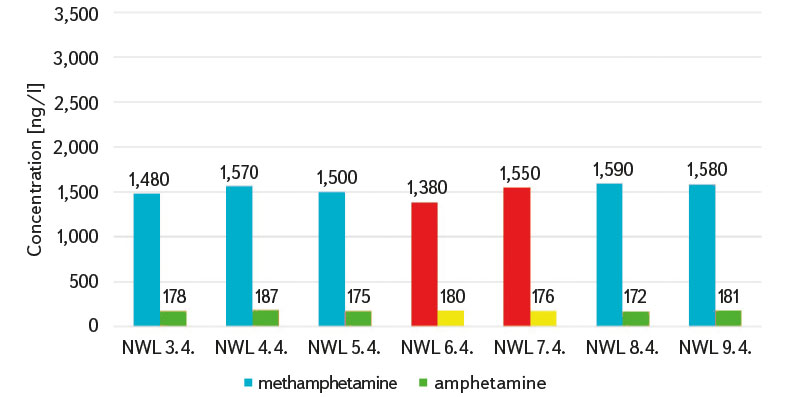
Fig. 3. Concentration of methamphetamine and amphetamine in wastewater sampled at the inflow to NWL in 2019 from April 3 to 9
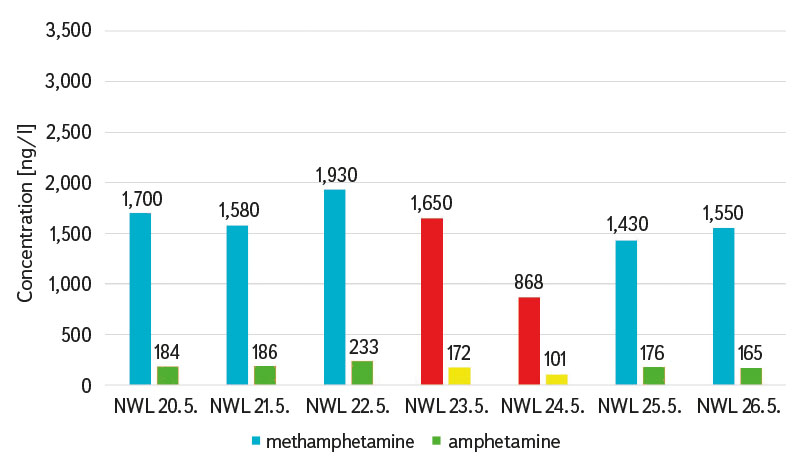
Fig. 4. Concentration of methamphetamine and amphetamine in wastewater sampled at the inflow to NWL in 2020 from May 20 to 26
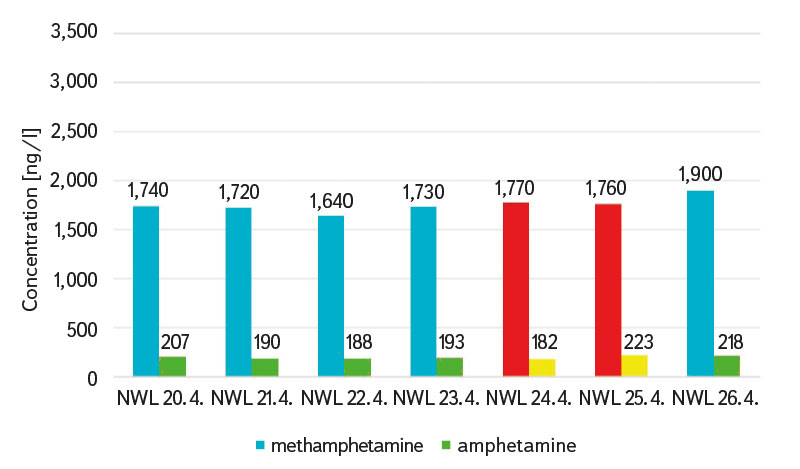
Fig. 5. Concentration of methamphetamine and amphetamine in wastewater sampled at the inflow to NWL in 2021 from April 20 to 26
Fig. 6. Concentration of methamphetamine and amphetamine in wastewater sampled at the inflow to NWL in 2022 from April 6 to 12
Methamphetamine consumption does not vary much between the days of the week, as can be seen in Figs. 3 and 5. In Fig. 6, the lower concentration on 9th April was probably caused by heavy rainfall and thus dilution of a water sample. In the following days, there was also a higher consumption of this drug, which could have been caused by the cancellation of emergency measures on 11th April. This increase is also clearly visible in Fig. 2.
Marijuana
Marijuana consumption is monitored by the rate of occurrence of its stable metabolite nor-THC (11-nor-9-carboxy-delta-9-THC). With this drug, as with methamphetamine, consumption does not depend on specific days of the week. Figs. 7 to 10 document its consumption.
According to the wastewater analysis, marijuana consumption gradually increased between 2019 and 2022; practically the same applies to this drug as in the case of methamphetamine.
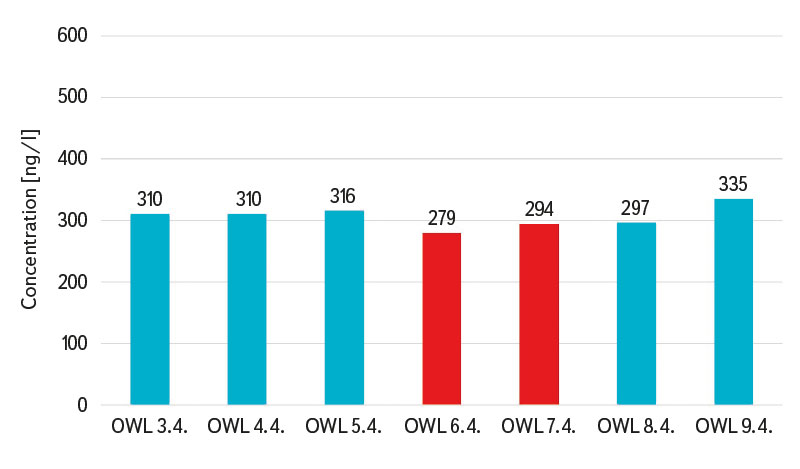
Fig. 7. Concentration of nor-THC (11-nor-9-carboxy-delta-9-THC) in wastewater sampled at the inflow to the OWL in 2019 from April 3 to 9
Fig. 8. Concentration of nor-THC (11-nor-9-carboxy-delta-9-THC) in wastewater sampled at the inflow to the OWL in 2020 from May 20 to 26
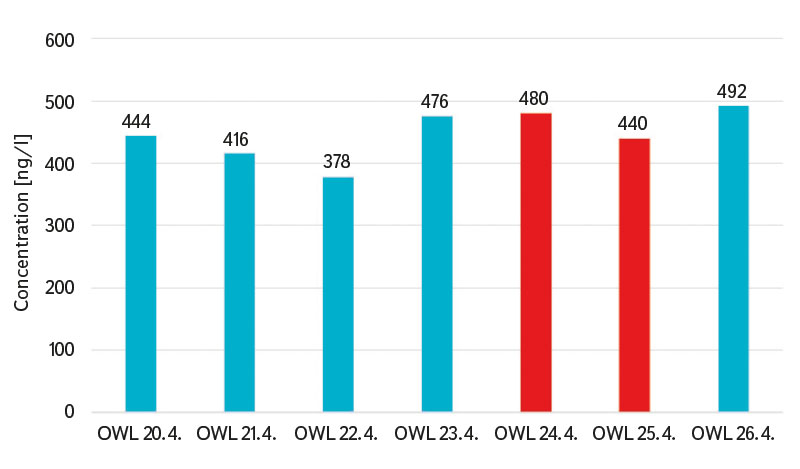
Fig. 9. Concentration of nor-THC (11-nor-9-carboxy-delta-9-THC) in wastewater sampled at the inflow to the OWL in 2021 from April 20 to 26
Fig. 10. Concentration of nor-THC (11-nor-9-carboxy-delta-9-THC) in wastewater sampled at the inflow to the OWL in 2022 from April 6 to 12
Ecstasy (MDMA, 3,4-methylenedioxy-N-methamphetamine)
The determined concentration of ecstasy in municipal wastewater is presented in Figs. 11 to 14. Due to its nature, consumption of this drug was reduced during Covid-19 pandemic.
The graphical representations above in particular confirm the weekend consumption of ecstasy. Fig. 11, where the results are from a year unaffected by the pandemic situation, shows an up to fourfold increase in consumption at the weekend compared to a normal working day. In 2020, during the monitoring event, restrictive measures were still in force, including a state of emergency. However, there was already a reduction in the number of infected persons, and thus also less tension in the population. The state of emergency was lifted in mid-May 2020. The situation was similar in 2021: the state of emergency ended on 11th April, and measures according to the pandemic law remained in force. On 23rd April, there was another relaxation, to which the drug scene immediately reacted, as it was again possible to organize social events. Fig. 14 shows the situation most clearly for 2022. The reaction to the information that most of the emergency measures will be lifted from 11th April was immediate; the consumption of ecstasy increased more than three times.
Fig. 11. Concentration of ecstasy (MDMA, 3,4-methylendioxy-N-methamphetamine) in wastewater sampled at the inflow to OWL in 2019 from April 3 to 9
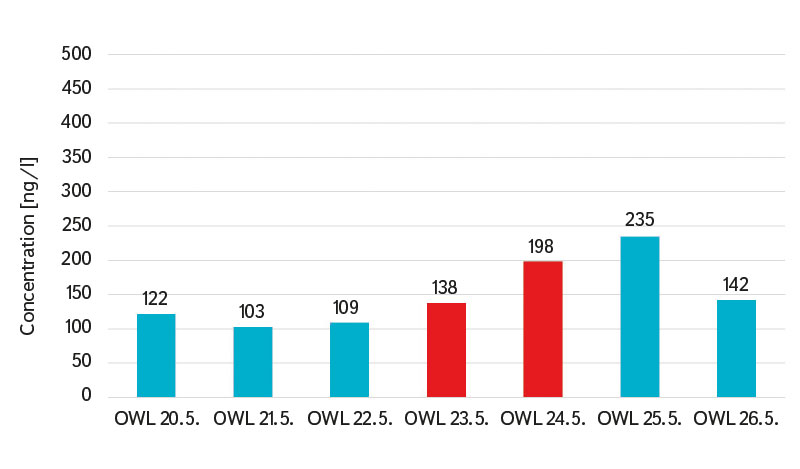
Fig. 12. Concentration of ecstasy (MDMA, 3,4-methylene-dioxy-methamphetamine) in wastewater sampled at the inflow to OWL in 2020 from May 20 to 26
Fig. 13. Concentration of ecstasy (MDMA, 3,4-methylendioxy-N-methamphetamine) in wastewater sampled at the inflow to OWL in 2021 from April 20 to 26
Fig. 14. Concentration of ecstasy (MDMA, 3,4-methylene-dioxy-methamphetamine) in wastewater sampled at the inflow to OWL in 2022 from April 6 to 12
Cocaine
Cocaine is monitored through the determination of its most important metabolite, benzoylecgonine. It is an expensive drug used mainly at parties of the population group with higher incomes. In this case, we specifically selected the inflow to the old water line (OWL) for monitoring, where the water from main sewer B is also discharged. Here, the cocaine concentration, or its metabolite benzoylecgonine, is the highest in the whole of Prague and prevails over methamphetamine, which is a typical dominant drug in the Czech Republic [13].
The results obtained for cocaine can be seen in Figs. 15 to 18.
Basically, the same applies to cocaine as it does to ecstasy. In the graph in Fig. 15 (2019), there is again a typical increase at the weekend in the concentration of the monitored drug, especially its metabolite. In 2020 (Fig. 16), the concentration is approximately the same throughout the week. As a result of the restrictions imposed by the state of emergency, it was forbidden to organize social events; the expectation of a certain relaxation did not show in the case of cocaine. In 2021 (Fig. 17), the impact of the relaxation of emergency measures has already partially manifested itself. However, the most significant change is in Fig. 18 (2022), where the rapid reaction to the mere announcement that the emergency measures will be lifted on 11th April is evident.
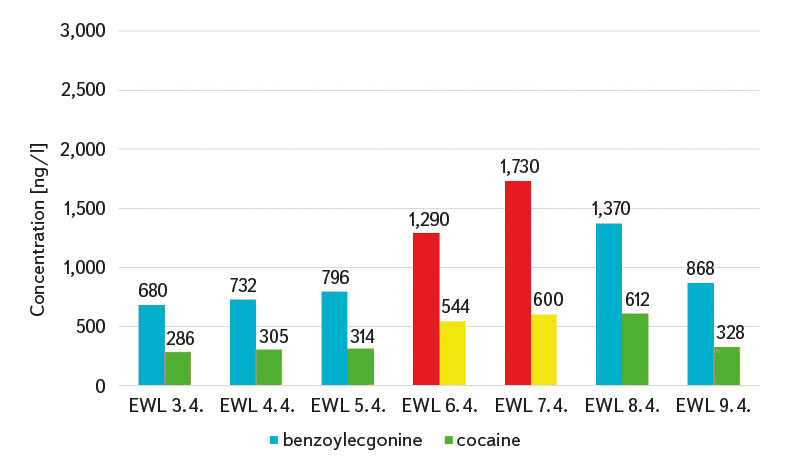
Fig. 15. Concentration of cocaine and benzoylecgonine in wastewater sampled at the inflow to OWL in 2019 from April 3 to 9
Fig. 16. Concentration of cocaine and benzoylecgonine in wastewater sampled at the inflow to OWL in 2020 from May 20 to 26
Fig. 17. Concentration of cocaine and benzoylecgonine in wastewater sampled at the inflow to OWL in 2021 from April 20 to 26
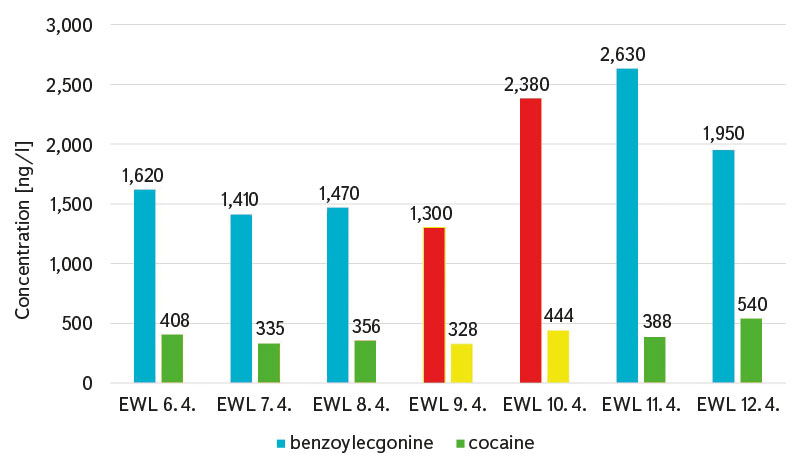
Fig. 18. Concentration of cocaine and benzoylecgonine in wastewater sampled at the inflow to OWL in 2022 from April 6 to 12
CONCLUSION
We tried to find out if and how the pandemic situation affected drug consumption from the point of view of wastewater analysis. We compared the results of weekly sampling events from 2019, 2020, 2021 and 2022, which took place around the same time of year; however, in 2020, 2021 and 2022, they were affected by the state of emergency and other measures related to the pandemic. We monitored the concentration of selected drugs (THC, methamphetamine, MDMA, cocaine and their metabolites amphetamine and
benzoylecgonine). According to our measurements, there were changes in consumption for practically all monitored drugs, and it can be seen how quickly the drug scene reacted to the announcement of mainly positive changes related to the state of emergency and various measures, such as the re-introduction of dance parties and other mass events. In our opinion, the high informative value of the wastewater analysis results and the ever-increasing importance of the epidemiological approach to these waters, which was significantly influenced and highlighted by the Covid-19 pandemic, was thus confirmed. Precisely due to the very high informative value and predictive ability of municipal wastewater, it would be very appropriate to continue research using the Wastewater Based Epidemiology and, if possible, to further include other groups of substances and biomarkers that may occur in municipal wastewater [15].
Acknowledgements
The measurements used in the article were part of the project “Clean Water – Healthy City”, the concept “Municipal wastewater as a diagnostic medium of the capital city of Prague”, financed from the funds of the City of Prague under the Operational Programme Prague – Pole of Growth of the Czech Republic, Registration number: CZ.07.1.02 / 0.0 / 0.0 / 16_040 / 0000378 and internal grants 3600.54.05/2021 and 3600.54.05/2022 TGM WRI, p. r. i., financed from the institutional funds of the Ministry of the Environment.
Water sampling would not be possible without close cooperation with the companies VEOLIA, a. s., and Pražské vodovody a kanalizace, a. s.
The Czech version of this article was peer-reviewed, the English version was translated from the Czech original by Environmental Translation Ltd.
